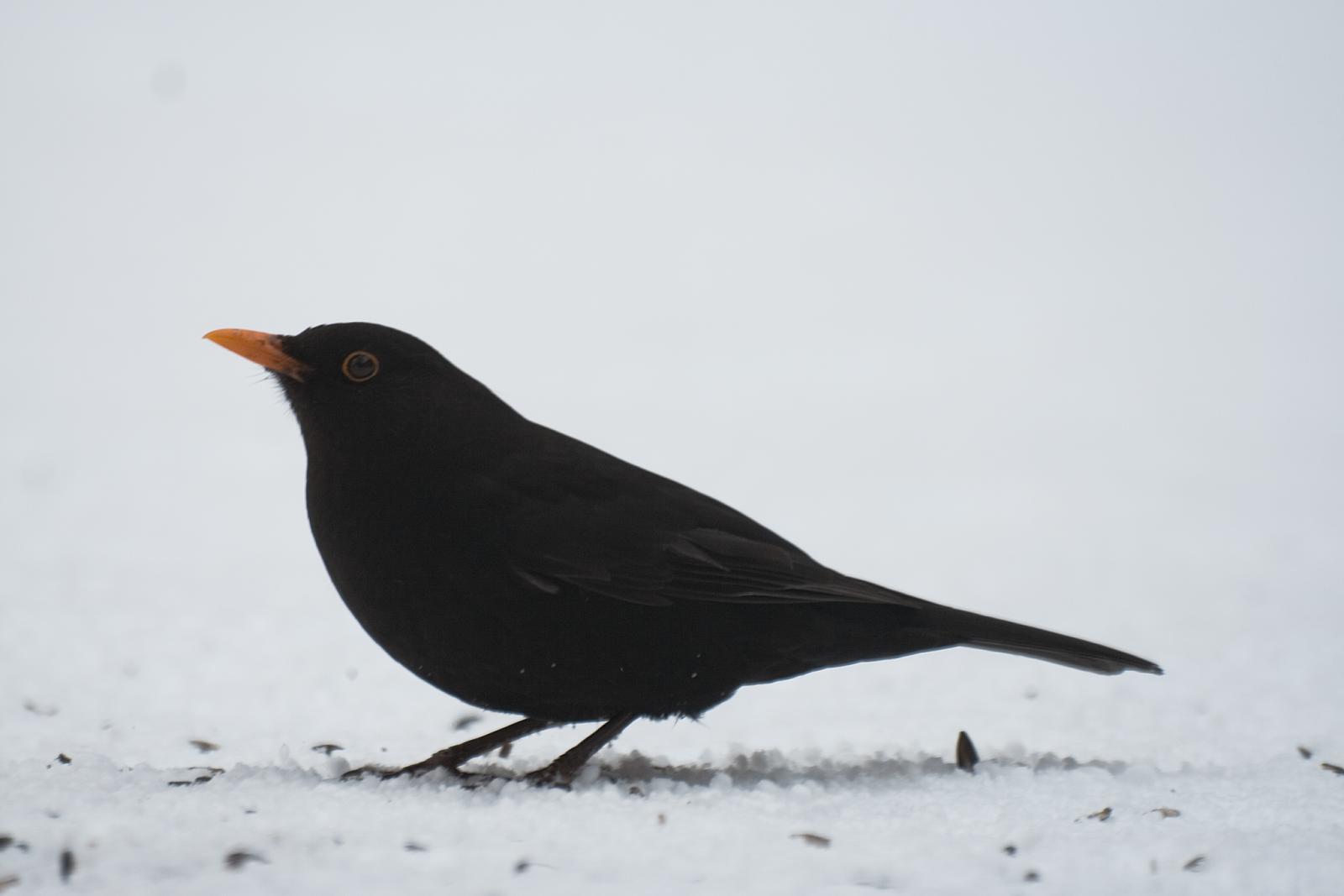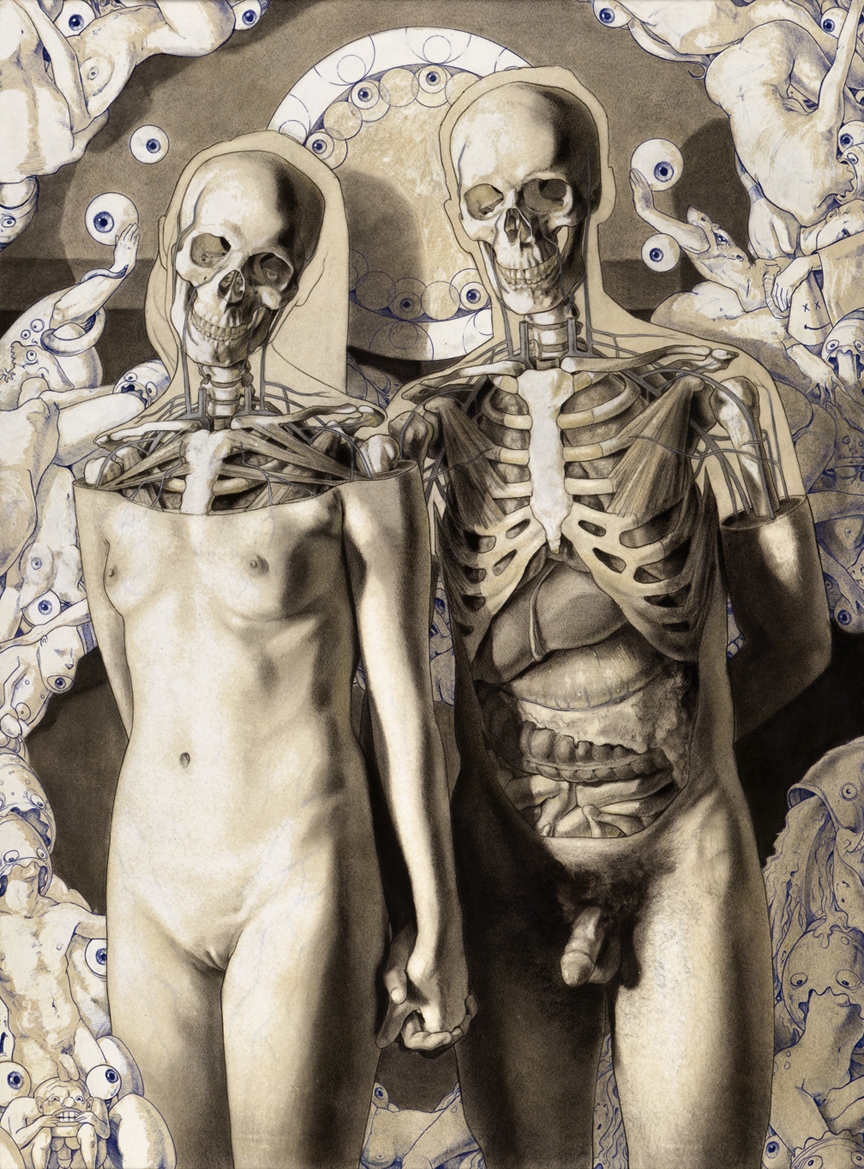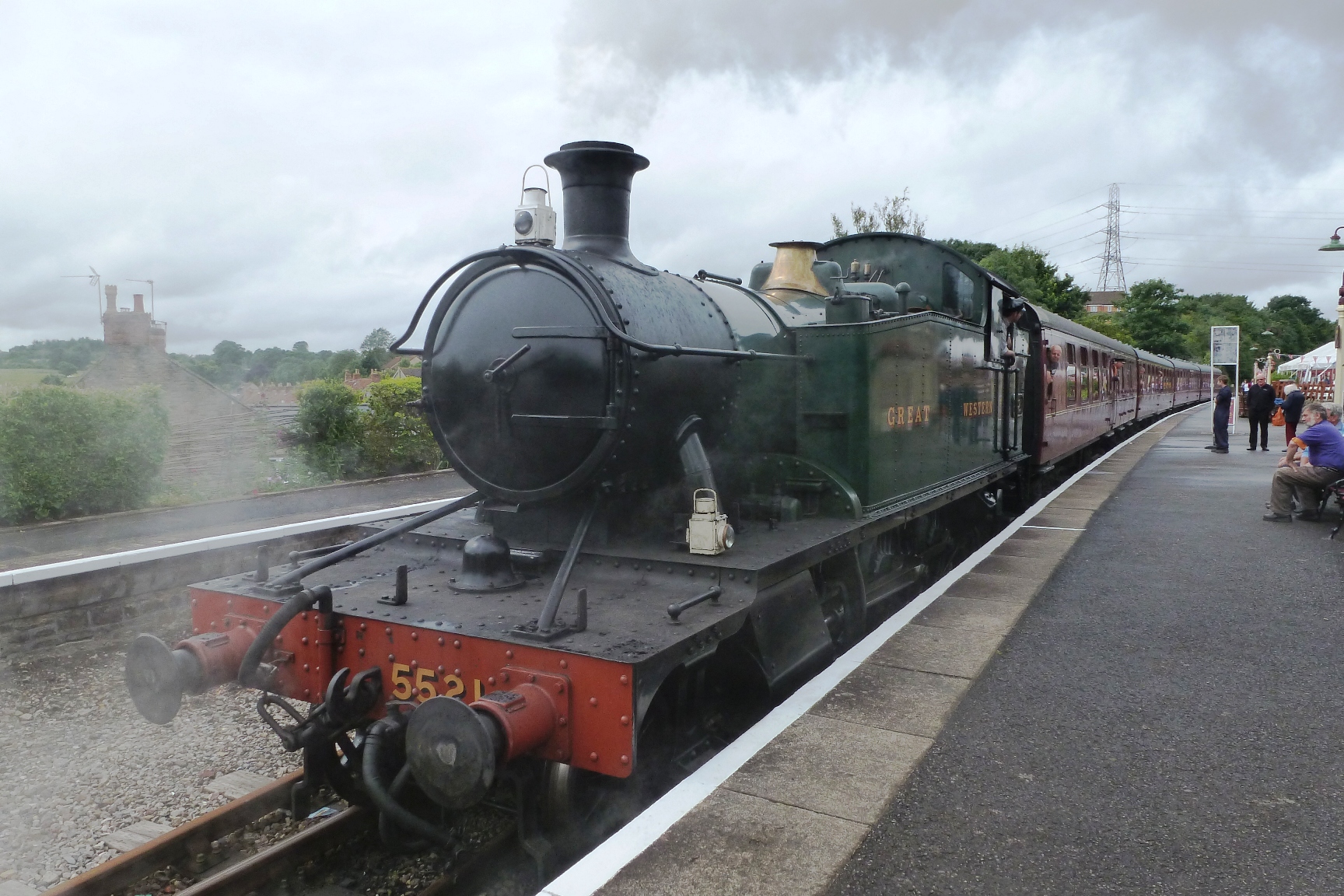Recent animation that explores how the lifestyles of far-removed cultures can impact the way we think about our own lives
Read MoreSteam Powered (Zoom H4n vs Sony PCM-10)
Field recordings from Bitton Railway Station (a comparison between the Sony PCM-10 and the Zoom H4n)
A few weeks ago, as part of a filming trip with work I went to Bitton Railway Station just outside of Bristol. Whilst there I thought it would be a good opportunity to throw my audio recorders about and hopefully capture some nice recordings of steam engines. It would also give me a nice opportunity to make comparisons between my Zoom H4n and Sony PCM-10 recorders - not only on sound quality* but on ease of use.

We were filming there as part of an Ri Channel filming project involving engineers (find out more here), we were interested in using old steam engines at Bitton to illustrate the problem of dynamic loading in material fatigue. A common problem with old steam engines is that they imposed an uneven / cyclic loading pattern, which was bad news for old railway bridges - often leading to their collapse and horrendous train accidents (see Dee bridge disaster).
I absolutely love the complex sounds of machinery and especially the rare sound of an old steam engine - so whilst in between hoping around madly with cameras, changing lenses or getting lost in clouds of steam I placed my recorders mostly at random and very much hoped for the best. I'll go through the results below:
*A caveat - the recorders weren't placed in identical locations and the recordings aren't all made simultaneously - so the comparisons are in no way definitive.
Sony PCM-10
I was really pleased by the quality of these recordings - theres a lot of detail in them and I found that this recorder relative to the Zoom H4n was much easier to manage, in terms of setting it down somewhere and getting it into record quickly. Due to its generous battery life and size I could very easily leave it powered on and bung it in my trouser pocket - this allowed me to get it out very quickly and stick it on record at a moments notice - something that wasn't as easy to do with the Zoom.
Another, very simple note - in this instance I much preferred the Sony's analog gain dial, which is a physical wheel (rather than the Zoom's buttons) - it's not only easier to make minute adjustments but also easier to set without necessarily having to monitor the output (for example just by looking or feeling for the position of the dial)- the Zoom has a digital interface, with values from 1-100, although it's more precise, it's a little more fiddly to make quick adjustments and is at a greater risk of creating handling noise if adjusting during a recording.
Recordings are in stereo using the inbuilt mics, light eq added in post, removing some low end and a subtle limiter placed on it.
Train Departs Station 1 (01:31)
Recorded at the end of the station platform, with the train about a meter or so away. You can hear a few voices in the background and the controllers whistle just before it departs - I especially love the sound of the train whistle from a distance with its light reverb, it has a very haunting quality to it. The train was probably a couple of meters from the recorder.
[audio "https://dl.dropbox.com/u/13042873/Bitton%20Railway/Sony/Train%20Departs_1%20%28Sony%20PCM10%29.mp3"]
Train Departs Station 2 (02:40)
This was both the best and the worst recording of the day, recorded from 'the other side of the tracks' - in other words from the ground across from the station with the train a couple of meters away, departing from center to left of the recorder. There's some nice detail in this as the train moves into the distance, particularly its whistle and the rattly carriages, but the beginning is pretty useless as it peaks and distorts!
[audio "https://dl.dropbox.com/u/13042873/Bitton%20Railway/Sony/Train%20Departs_2_Clipped%20%28Sony%20PCM10%29.mp3"]
Setting the levels was total guess work as I had to just leave the recorder running whilst we filmed - so in this case I wasn't so lucky! Bugger.
Here's the same thing happening, but from the camera input (Panasonic AF101) via a Rode NTG2 shotgun mic (mono):
[audio "https://dl.dropbox.com/u/13042873/Bitton%20Railway/Rode/Train%20Departs%20Station%20Rhode%20NTG2.mp3"]
Zoom H4n
I've always loved my Zoom, but I must admit on this occasion it was a lot more hassle to manage. It's a lot bulkier, meaning it's a bit of a faff to carry around and keep about your person, especially when you've got a lot of other gear. It also seemed to take a lot longer to power and set up (esp having to put the wind shield on each time) - the Sony seemed to manage fairly well without a windshield (but there wasn't much wind). However the recordings were pretty nice - sometimes they sounded a bit 'muddier' than the Sony but this could be due to the recorders physical placement, it was often a bit further away from the action than the Sony.
Note - these recordings (I think) were taken at different times to the Sony recordings. Recordings in stereo with built in mics - light eq added in post to reduce low-end and a subtle limiter.
Train Departs Station 1 (01:22)
Recorded from the station platform, a little further back than the Sony - train moves across to the right, I particularly like the sound of the carriages as they move across the center and again the train's whistle in the distance is lovely.
[audio "https://dl.dropbox.com/u/13042873/Bitton%20Railway/Zoom/Train%20Departs%20Station%20%28Zoom%20H4n%29.mp3"]
Train Enters Station (00:50)
A lot noiser this one - this captures the train entering the station from the other end, passing from left to right - the recorder was pretty low on the station floor and a couple of meters from the platform edge, it picks up a lot of voices and excited children!
[audio "https://dl.dropbox.com/u/13042873/Bitton%20Railway/Zoom/Train%20enters%20station%20%28Zoom%20H4n%29.mp3"]
Train Departs Station 2 (01:10)
Still at the other end of the platform, this time the train departs moving from right to left - you can clearly hear the controllers whistle before the train departs and voices from people standing about the platform. Again the recorder was a couple of meters from the platform edge.
[audio "https://dl.dropbox.com/u/13042873/Bitton%20Railway/Zoom/Train%20departs%20from%20station%202%20%28Zoom%20H4n%29.mp3"]
--
Final thoughts...
Okay so this isn't a definitive comparison review, but personally I found the Sony PCM-10 to be the more useful recorder in this circumstance. It's far more portable - I tend to keep the Sony on me all of the time now and only bring the Zoom when I know I'm going to be recording something. If I was concentrating specifically on capturing audio, then the situation might well be different, but in this instance, when I wanted to quickly make decent recordings without much thought, the Sony was ideal. Monitoring audio without headphones was also a lot clearer with the Sony as it has little green and red (for when audio peaks) indicator lights mounted above the screen below the mics - this is great for quickly knowing when your record levels are set too high - even from a distance I could see this.
I think the pre-amps in the Sony are also much quieter than the Zoom's which often leads to recordings with much less noise and hiss. This is especially useful when capturing the more subtle, quieter details of a soundscape.
Ultimately the portability and battery life of the Sony means that I can just leave it powered on and bung it in a bag or pocket and because of this it's the recorder I tend to reach for more often.
If you have any thoughts, questions or experience with these recorders I would be interested to hear about them in the comments below. Additionally all these recordings are available under a Creative Commons licence - attribution, non-commercial, share-alike and I'd be happy to send them to anyone who wants them. Hopefully I'll get round to adding them to the Freesound Archive.
Audio piece: Porn Whales
From porn wails to porn whales
http://soundcloud.com/eprosser/porn-whales
The idea for this piece fell out of a session playing around with audio samples taken from various pornography films, in a bid to produce something for an In the Dark listening event. After a while of manipulating and stretching out these smutty samples I was struck by how much the moans and groans came to resemble the calls of whales.
After a bit of whale sound research I worked to manipulate these sounds until they modelled the range of sounds associated with whales. From the high-pitched clicks, squeaks and squeals to the lower frequency rumbles. The sounds become slightly more unsettling when processed in this way (although out of context they didn't originally sound that nice to begin with), removing the visual element with which these sounds were originally presented with, definitely made them more sinister. The high-pitched screams are particularly unsettling on their own, baring very little resemblance to the original sample.
However for the event this piece was to be presented at we were keen to finish with something fairly light hearted and I thought it would be much more fun to experiment and explore the concept of 'porn whales' than turn this into something dark and foreboding - there was plenty of that featured at the event anyway.
The sounds of the sea were added to provide a little context (recorded in Brighton on a zoom H4n) and the gentle, soothing music came from Kevin Macleod.
The piece was featured and played as part of the In the Dark 'One Night Stand' listening event at the Clachan Pub, London 14/05/12.
An added bonus - I thought I'd also share with you one of Isabella Rosseliini's great Green Porno films - 'Whale Sex' :
http://youtu.be/A-zJ1hGm-F8
Chris Watson on Noise
Interview
Last year I interviewed sound recordist Chris Watson on the subject of noise for a piece exploring the use of birdsong at Alder Hey Children's Hospital in Liverpool.
Chris is one of the worlds leading sound recordists and is well known for his work with the BBC Natural History Unit, including the recent Frozen Planet series.
There was a lot of interesting discussion during this interview about the nature of noise pollution and the considerable threat it poses to our quality of life. Worrying still, it appears that our noisy modern world is drowning out the natural soundscape and interfering with species of wildlife that rely on sound for communication.
What seems to be most alarming is that we're largely ignoring this problem - our world certainly isn't getting any quieter - and with more of us living in urbanised environments, noise pollution is fast becoming a significant health problem.
As only a portion of this interview was included within the Alder Hey piece, I thought it might be interesting to share some of the additional material. The interview was recorded at FACT in Liverpool, back in April of last year and explores some of the causes and concerns towards noise in the modern world.
http://soundcloud.com/eprosser/chris-watson-on-noise
Additional info
Further reading on the health effects of noise: a WHO report on the burden of disease from environmental noise
Nature on BBC Radio 4 is recommended listening if you want to hear more of Chris and his stunning wildlife recordings.
Touch Music also releases sound work by Chris, you can browse his collection here.
Birdsong: An Escape From The Noise
 I was interested to read today about a new research project being undertaken, to investigate the psychological impacts of exposure to birdsong. In particular the project will look at how birdsong affects our psychological state, including its effect on mood, attention and sense of creativity.
I was interested to read today about a new research project being undertaken, to investigate the psychological impacts of exposure to birdsong. In particular the project will look at how birdsong affects our psychological state, including its effect on mood, attention and sense of creativity.
The research is being conducted as a joint collaboration between the University of Surrey, National Trust and Surrey Wildlife Trust. Researcher Eleanor Ratcliffe, highlighted that there was a real a lack of evidence on the effects of birdsong, stating:
"A great deal of anecdotal evidence suggests that we respond positively to birdsong. However, currently there is a lack of scientific research on the psychological effects of listening to birds."
You can find out more about the project here.
For me the sound of birdsong offers predominantly positive associations. Living in London, I’m now surrounded by a largely synthetic soundscape, which is strongly connected to the stresses and frustrations of city life (the daily commute, working long hours and a persistent sense of fatigue).
Living amongst this hubbub has unsurprisingly increased the value I attribute to natural soundscapes. Standing in binary opposition to the din of urban living, natural soundscapes offer potential for escape, not just from noise, but from all the negative associations paired with it.
It may be that natural sounds can help us escape from a chaotic lifestyle or at least provide a restorative effect from stress. Understanding the psychological impacts of birdsong will allow us to better understand how we respond to such sounds and perhaps learn more about this relationship. If birdsong really does improve our state of mind and / or sense of wellbeing then it could have real potential in it’s application as a therapeutic tool.
Birdsong as a therapeutic tool?
Back in April / May – I produced a radio piece which looked at the use of Birdsong in the healthcare environment. Alder Hey Children’s Hospital in Liverpool has been experimenting with the use of birdsong to improve the experiences of it’s young patients.
Installed in the central corridor is a sound installation playing the beautiful birdsong recordings made by Chris Watson and Alder Hey patients. These recordings are also used with patients during traumatic and painful procedures, often as a way of calming them down or taking their minds off the situation.
Speaking to the hospital’s Arts Coordinator Vicky Charnock, I found out that there was already tremendous anecdotal evidence in support of birdsong as a therapeutic tool. They were also interested in setting up some form of trial in which to test the potential therapeutic benefits of birdsong.
You can listen to and download the piece here:
http://soundcloud.com/eprosser/alder-heys-dawn-chorus
Adam as machine
Audio piece
I'm currently in the midst of producing a 30 minute radio piece on the subject of death. To be more specific, I'm exploring contemporary attitudes towards death and doing so through the perspective of those who deal with death on a daily basis.
Part of my project took me to the basement of the Royal Sunderland Hospital where I spent the day exploring it's mortuary with pathologist Dr Stuart Hamilton. Recently, as I was listening back to his interview I begun to find myself fixated on a particular section, in which he discusses the way in which he views the human body. He describes his view of life as being very 'mechanistic' and as I listened to him talk about the body as 'pumps' and 'shunts' I was inspired to compose a short piece from his words.

As a biologist myself, I have always considered the human body to represent a beautiful feat of natural engineering. From the minute intricacies of the inner ear to the extent of the circulatory system, pulsating to the rhythm of a beating heart - the human body is living machine. Our consciousness and everything that makes us, 'us' is a product of this machinery and when the machine stops - so do we.
The title of this piece toys with the idea of Adam and Eve and how this throws up a very different view of the human body. However which ever view you take, both are unified in the fact that they find certain beauty in the human form.
[soundcloud width="100%" height="81" params="" url="http://api.soundcloud.com/tracks/19409214"]
Soundcloud's audio compression has reduced the quality of the piece somewhat so please get in touch if you'd like a copy of the original file.





